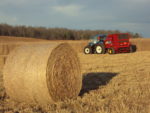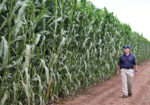Advertise Follow Us
Items Tagged with 'switchgrass'
ARTICLES
Diverse No-Till Cropping Wins Again
USDA researchers in North Dakota say recent studies show benefits to having perennials and annuals in a rotation, and that no-till is the best implementation tool.
Read More
Could Energy Crops Be In Your Rotation’s Future?
Switchgrass, miscanthus, camelina and other crops could provide new markets and opportunities for enterprising no-tillers.
Read More
Former CRP Acres Are Ideal For No-Till
With 10-plus years of undisturbed soil structure building under their belt, CRP acres are primed for no-till production.
Read More








